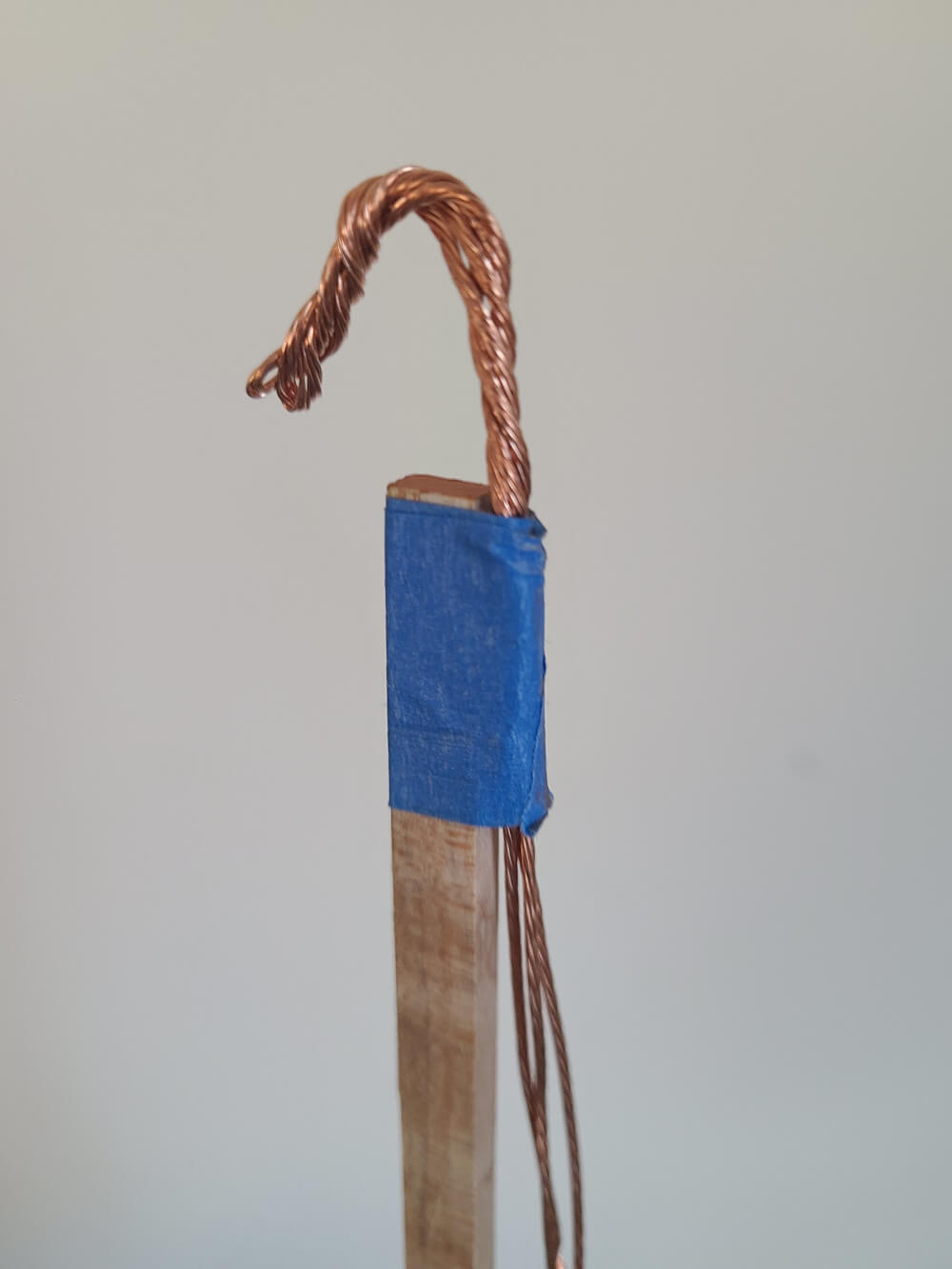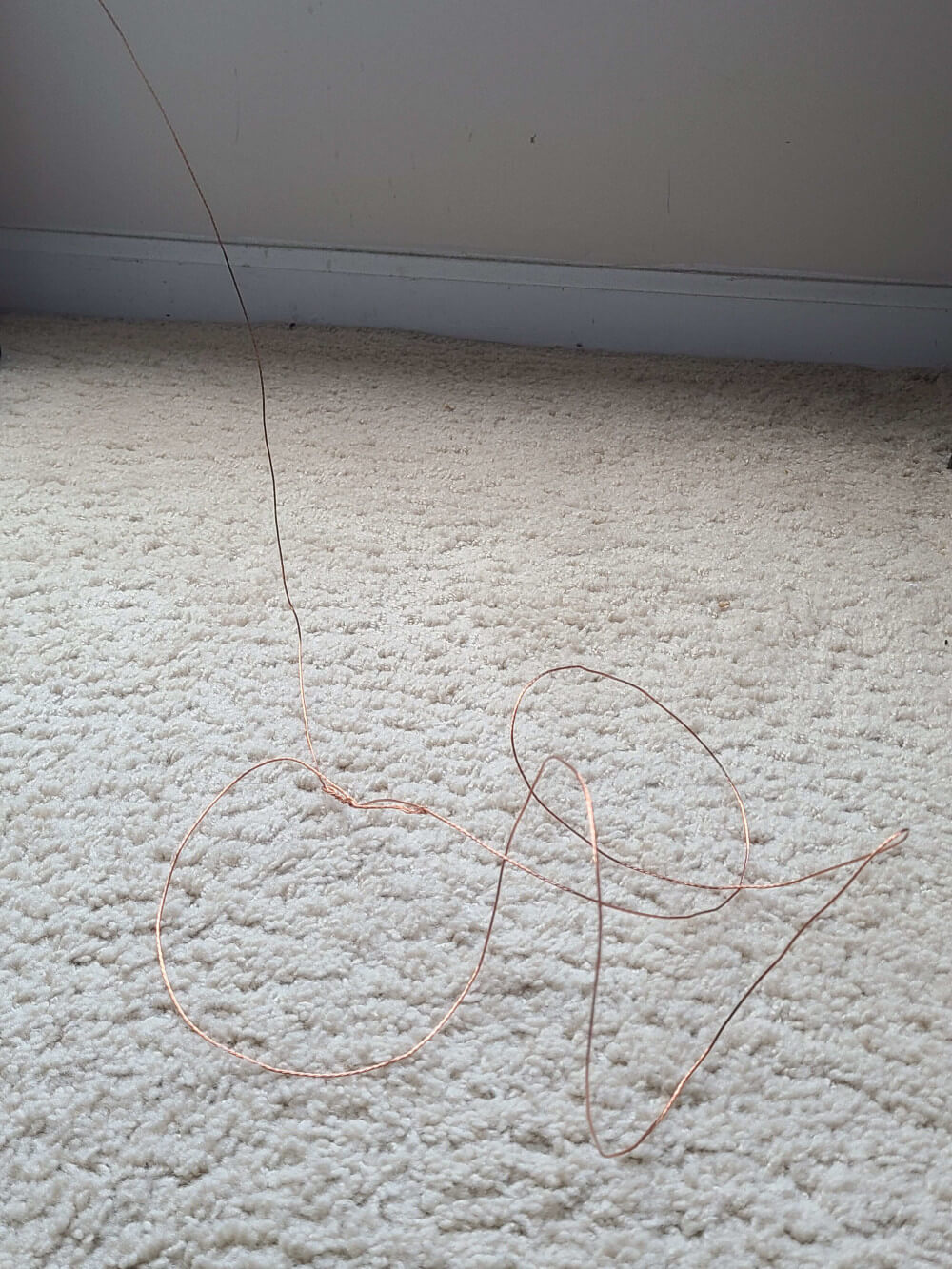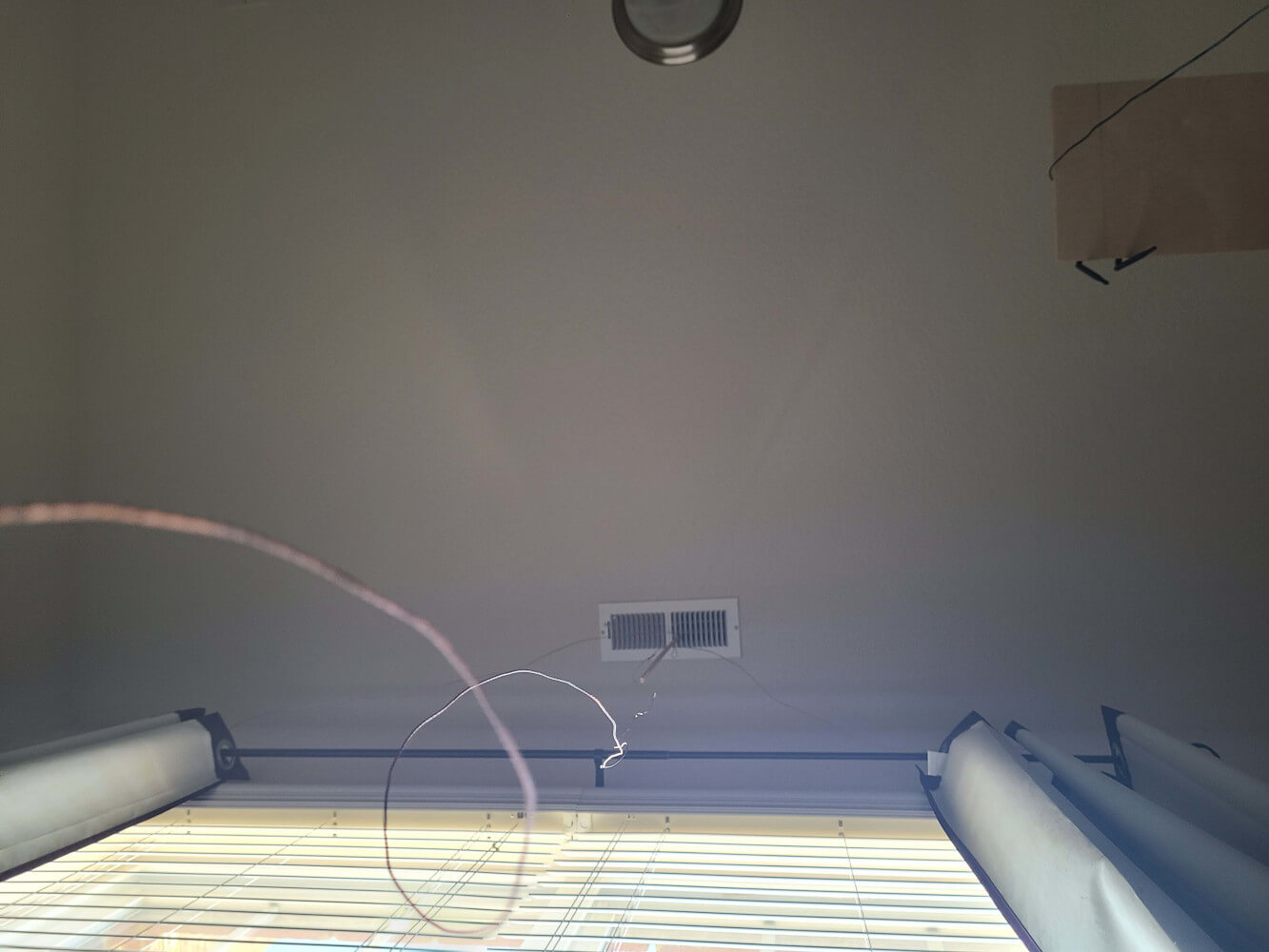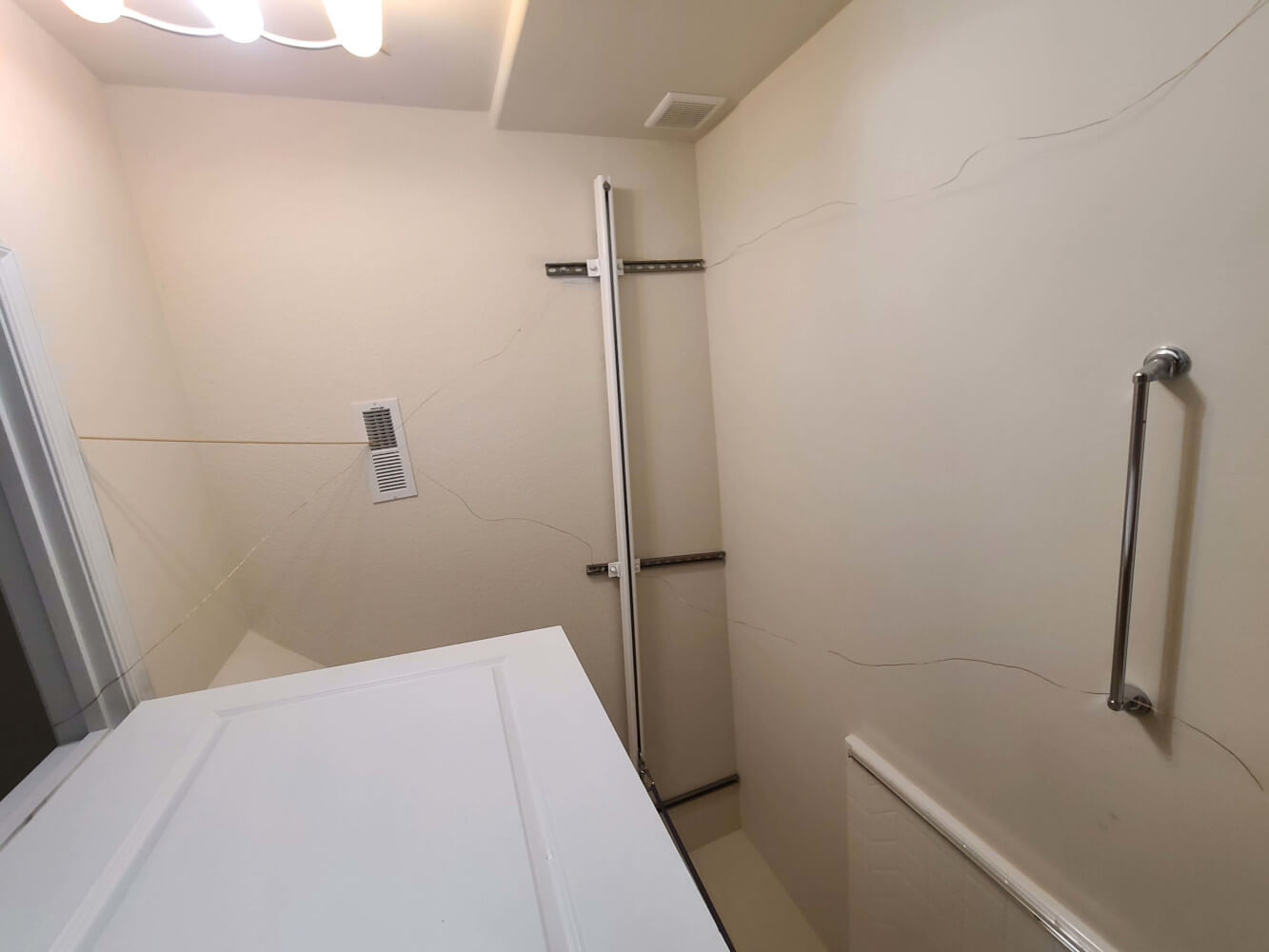Fig. 2 shows an outlet air duct with the conductive wires attachment inserted into the air duct. Fig. 3 the loose end of one of the conductive wires from the conductive wires attachment located on the floor.
Fig. 4 shows an outlet air vent in a bedroom with the conductive wires attachment inserted into the air duct. Fig. 5 shows an outlet air vent in a bathroom with the conductive wires attachment inserted into the air duct. As can be seen the bathroom implementation has the conductive wires run along the ceiling before they are directed towards the floor. In case there is any fear that the insertion of the conductive wires attachment into the duct could cause any damage to the air duct or apartment, it may be sufficient to run the wires along the ceiling without making an electrical connection with the air duct ventilation channels. It is not clear if the electrical connection to the air ducts provides any benefit or if running the wires along the ceiling (as shown in Fig. 5) before they are hung towards the floor provides any benefit.
The research site in Hampton, VA where AP resides has 12 outlet HVAC air ducts and one suction duct. One of the outlet air ducts is a larger outlet air duct, the rest of the 11 air ducts being standard small outlet air ducts. Currently only 9 air ducts are being used excluding the suction duct, the larger outlet air duct, and 2 smaller outlet air ducts.
Currently there is no other way of telling if the implemented VPE approach leads to the reduction in ADRES intensity other than from the level of physical discomfort of the AP before and after this approach was implemented as well as from observations related to the inferred changes in activities of the assumed ADRES personnel residing one floor above the Hampton research site apartment (based on the way they walk, run, relocate heavy items or leave the apartment abruptly after changes in defensive setups implemented by the AP). The AP believes that the VPE approach did result in some intensity reduction of the adverse effects perceived, there are however currently no technical means to confirm or disprove it.
The exact model of the copper wire used for VPE was not recorded at the beginning but it is believed to be a 500ft spool of uninsulated stranded SD bare copper grounding wire of gauge 18 by the "Southwire" company (Model# 55024745).




